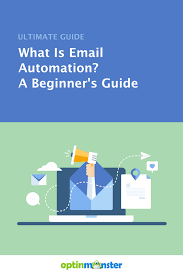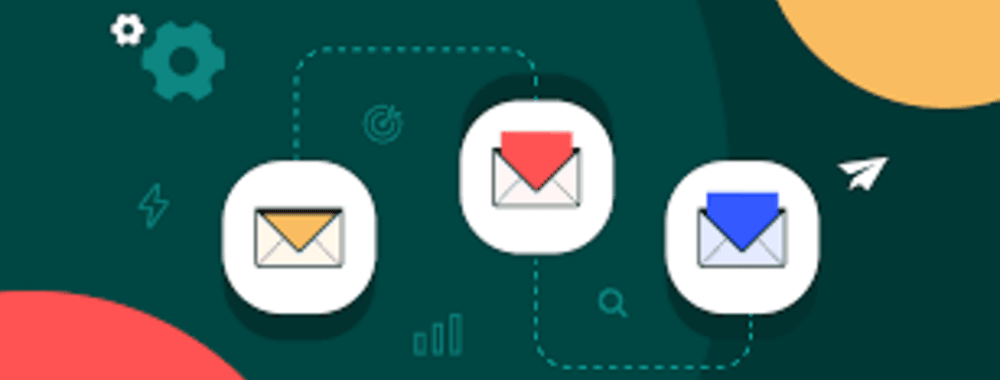Email marketing remains one of the most effective and ROI-friendly strategies in the digital marketing toolbox. But as your subscriber list grows, managing manual emails becomes unsustainable. That’s where email automation steps in—a game-changer for businesses looking to scale their marketing efforts without losing the personal touch.
If you’re new to the concept, don’t worry. This guide will walk you through everything you need to know about email automation, from what it is and why it matters to how you can get started right away.
What is Email Automation?
Email automation is the process of sending out emails to your subscribers automatically, based on specific triggers or schedules. Instead of crafting and sending individual emails for each person, automation lets you create workflows that run in the background. These workflows can include welcome sequences, abandoned cart reminders, birthday greetings, and more.
In essence, email automation is about delivering the right message to the right person at the right time, with minimal manual input.
Why Use Email Automation?
There are several compelling reasons to embrace email automation, especially as a beginner:
1. Saves Time
Once set up, email automation works 24/7. It eliminates repetitive tasks and frees up time to focus on strategy, content, and other marketing channels.
2. Improves Engagement
Emails triggered by subscriber actions are more relevant, which naturally boosts open and click-through rates.
3. Personalization at Scale
Automation tools allow for deep personalization using subscriber data—like names, purchase history, and behaviors—without having to send emails one-by-one.
4. Increases Revenue
From nurturing leads to recovering abandoned carts, automated emails can guide users down the sales funnel and ultimately increase conversions.
5. Better Analytics
Automation platforms typically offer detailed reports that help you understand what’s working, allowing you to tweak and optimize your campaigns over time.
Common Types of Email Automation Workflows
Here are a few beginner-friendly workflows that offer big impact:
1. Welcome Series
When someone subscribes to your list, a welcome series helps introduce your brand and set expectations. A good series might include:
Welcome and thank you message
A bit about your story or mission
Popular blog posts or product recommendations
A discount code or exclusive offer
2. Abandoned Cart Emails
If you run an e-commerce business, abandoned cart emails are crucial. These remind shoppers to complete their purchase, often with a gentle nudge like a discount or product reminder.
3. Birthday or Anniversary Emails
These personal touches go a long way in building brand loyalty. Include special discounts or gifts to make subscribers feel appreciated.
4. Re-engagement Campaigns
Inactive subscribers? Use a re-engagement workflow to win them back with a compelling offer or simply ask if they still want to hear from you.
5. Lead Nurturing Series
If you offer services or high-ticket items, nurture leads with value-packed emails that educate and build trust over time.
Getting Started with Email Automation: Step-by-Step
Step 1: Choose an Email Automation Platform
There are many tools out there, both free and paid. Popular ones include:
Start with a platform that fits your budget and has an intuitive interface for beginners.
Step 2: Build and Segment Your List
Before you can automate anything, you need subscribers. Use lead magnets, popups, or embedded forms on your site to capture emails. Segment your list based on behavior, interest, or demographics to send more targeted messages.
Step 3: Create Your Email Content
Each automated email should have a clear purpose and call to action (CTA). Keep your tone consistent with your brand, and don’t forget to optimize for mobile.
Step 4: Set Up Triggers
Triggers determine when and why a workflow starts. Common triggers include:
A new subscriber joins your list
A user clicks a specific link
A customer makes a purchase
A cart is abandoned
Choose the right trigger based on your campaign goals.
Step 5: Test and Monitor
Don’t just “set it and forget it.” Monitor your open rates, click-throughs, and conversions. A/B test subject lines, content formats, and send times to find what works best.
Tips for Successful Email Automation
Keep it human: Automation doesn’t mean robotic. Write like you’re talking to a real person.
Avoid spamming: Don’t overdo it. Respect inboxes and always provide an easy way to unsubscribe.
Stay compliant: Follow regulations like GDPR or CAN-SPAM by including your physical address and opt-out link.
Use dynamic content: Show different content blocks to different segments within the same email for even more personalization.
Regularly update workflows: As your business evolves, revisit your automations to ensure they still align with your goals and branding.
Common Mistakes to Avoid
Over-automating: Not every interaction needs an automated email. Choose wisely.
Poor segmentation: Sending the same message to everyone defeats the purpose of automation.
Neglecting mobile optimization: A large chunk of emails are read on mobile—if yours don’t look good, you’ll lose engagement.
Weak CTAs: Every email should have a clear next step, whether it’s clicking a link, buying a product, or replying.
Final Thoughts
Email automation is not just a buzzword—it’s a foundational strategy for growing your business while working smarter, not harder. With a bit of setup and creativity, you can deliver valuable, personalized experiences to your subscribers, build trust, and drive conversions like never before.
Whether you’re a blogger, entrepreneur, or marketer just getting started, now is the perfect time to embrace email automation. Start simple, experiment often, and keep learning as you grow.
